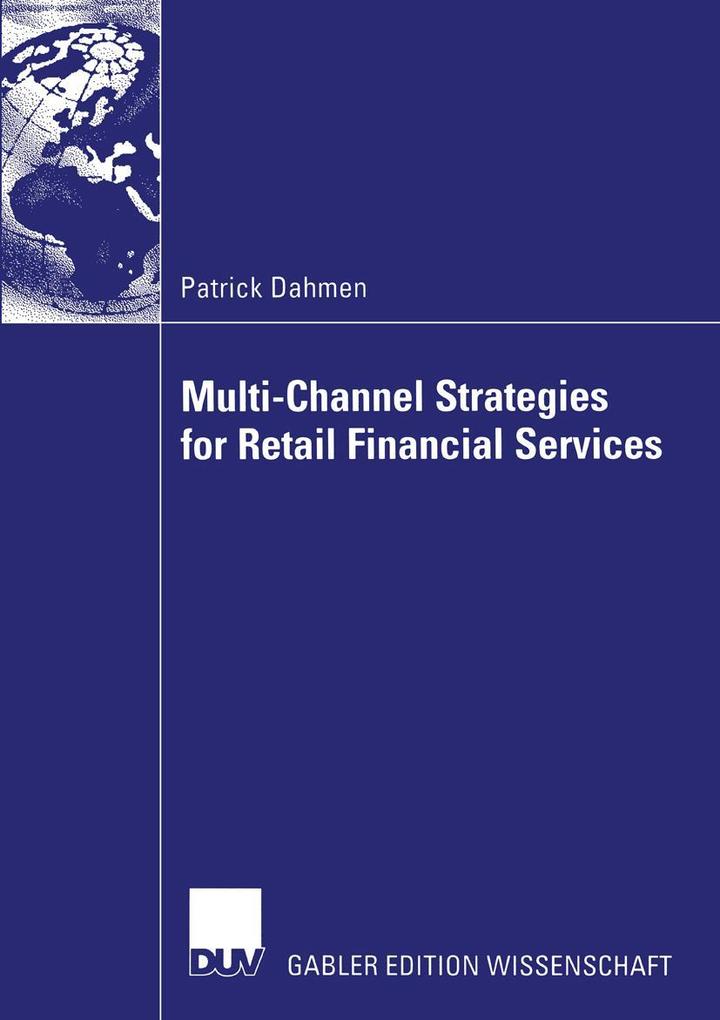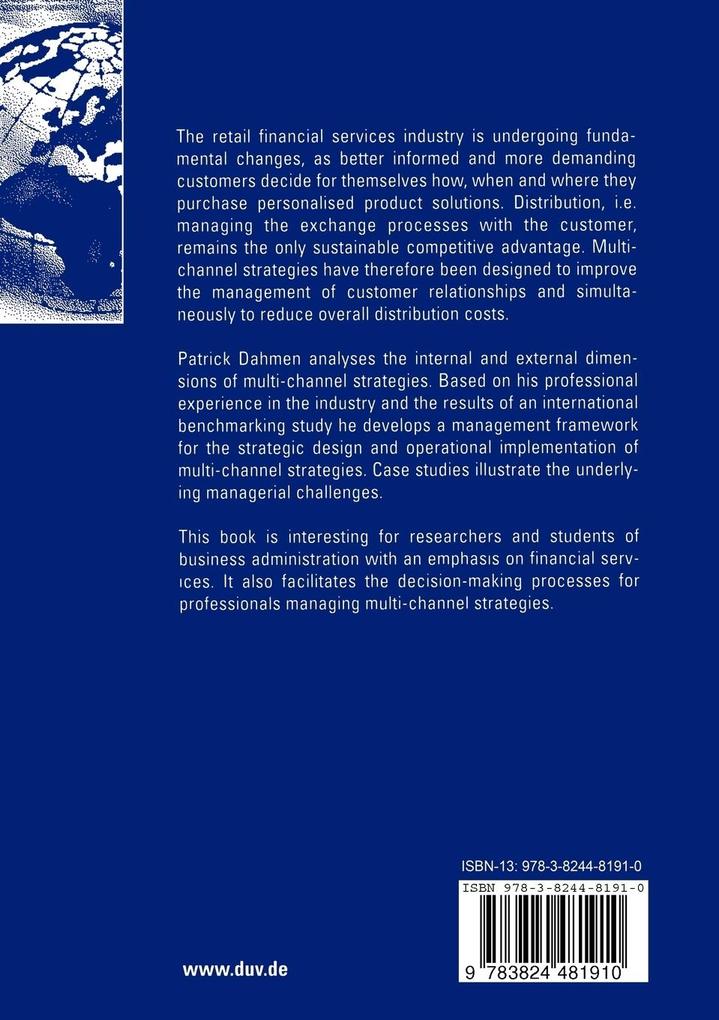
Zustellung: Do, 10.07. - Sa, 12.07.
Versand in 2 Tagen
VersandkostenfreiVII Foreword The retail financial services industry, especially the insurance industry, is undergoing fundamental changes. Prior to and in the aftermath of the deregulation of the insurance industry at the beginning of the 1990's, insurers have continued to focus more on stability and security rather than on efficiency and profitability. The capital market crisis, the deregulation, the gradual break-up of the traditionally integrated value chain coupled with the emergence of new players in the market as well technological advancements have all led to a fundamental shake-up of the financial services industry. Nevertheless, the cultural consequences of the regulated period are still visible today: in some insurance companies changes in the distribution of financial services can seldom be implemented without the acceptance of its tied agent channel, although experience from neighbouring industries, for example retail banking, clearly illustrates the necessity to align the distribution system with new trends in consumer behaviour, i. e. , with the general wish for more convenient shopping opportunities anywhere, anytime and in any way. Financial services are characterised by a high degree of interactivity with the customer during the entire process of service delivery, while information asymmetries arise as a result of the dominance of credence and experience qualities. The product "financial services" therefore goes far beyond its core product, e. g. risk protection; it covers all other elements of the customer relationship process.
Inhaltsverzeichnis
I. Academic and Empirical Relevance of the Research Subject. - 1. Research Objectives, Approach, Methods and Structure. - 2. Changes in the Distribution of Retail Financial Services. - II. Framework for the Design of Multi-Channel Distribution Systems. - 3. Major Analytical Dimensions of Distribution Systems. - 4. Particularities in the Distribution of Retail Financial Services. - 5. Impact of the Corporate Positioning on the Distribution Strategy. - 6. Classification of Multi-Channel Distribution Systems. - III. Operational Implementation of Multi-Channel Distribution Strategies. - 7. External Fit of the Distribution System. - 8. Internal Fit of the Distribution System. - 9. Financial Steering of the Distribution System. - IV. Conclusion. - V. Bibliography.
Produktdetails
Erscheinungsdatum
28. Oktober 2004
Sprache
englisch
Auflage
Softcover reprint of the original 1st edition 2004
Seitenanzahl
236
Autor/Autorin
Patrick Dahmen
Verlag/Hersteller
Produktart
kartoniert
Abbildungen
XVIII, 215 p. 8 illus.
Gewicht
311 g
Größe (L/B/H)
210/148/13 mm
ISBN
9783824481910
Entdecken Sie mehr
Bewertungen
0 Bewertungen
Es wurden noch keine Bewertungen abgegeben. Schreiben Sie die erste Bewertung zu "Multi-Channel Strategies for Retail Financial Services" und helfen Sie damit anderen bei der Kaufentscheidung.








